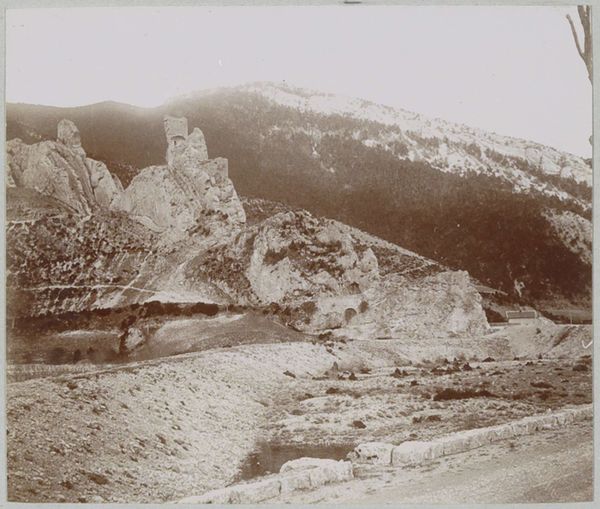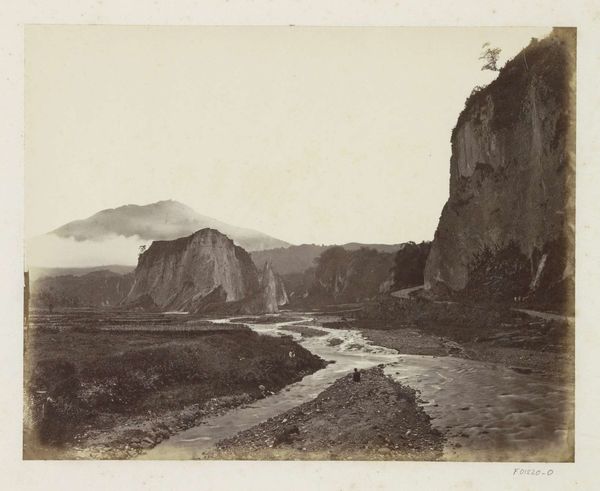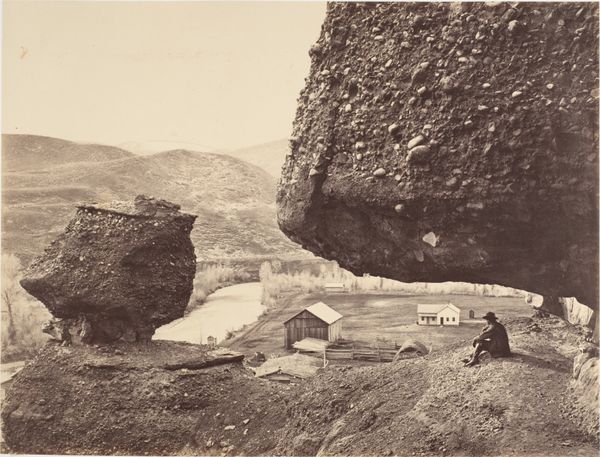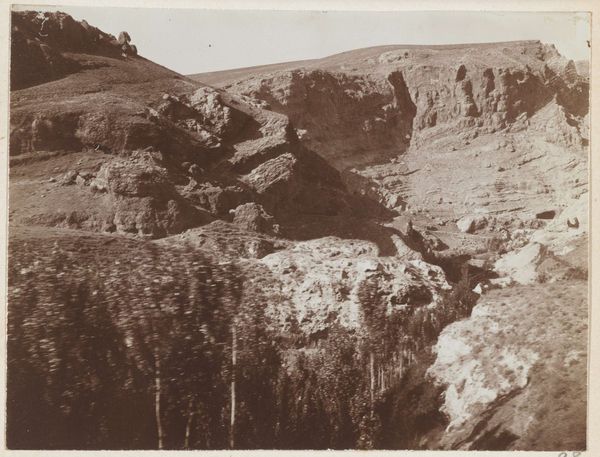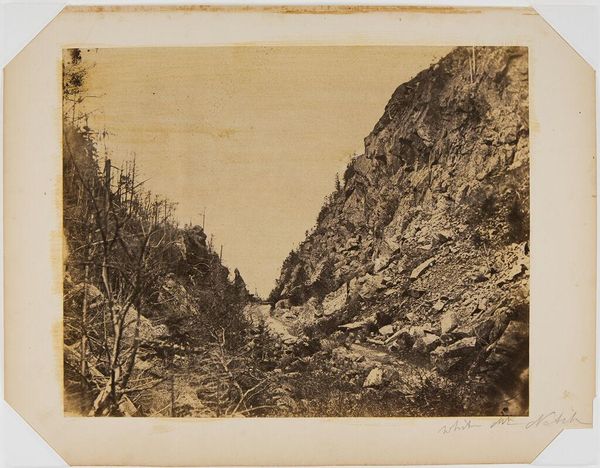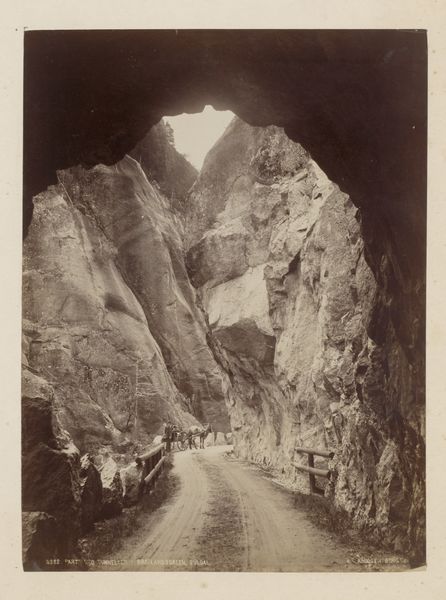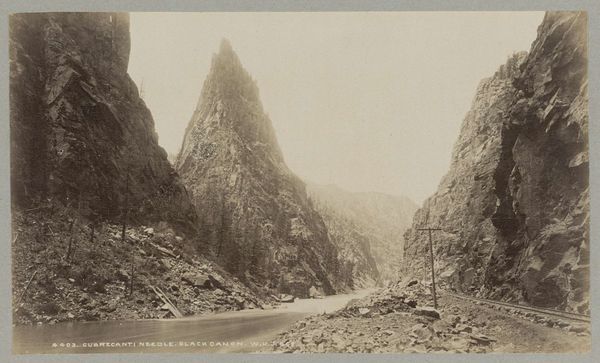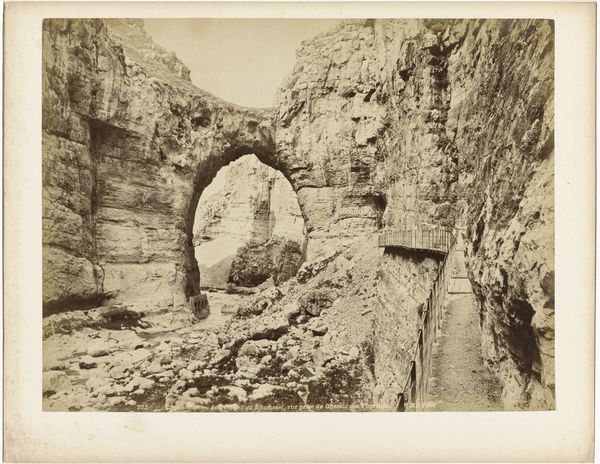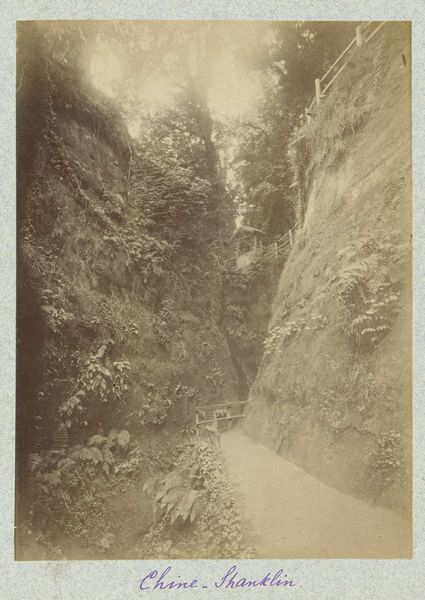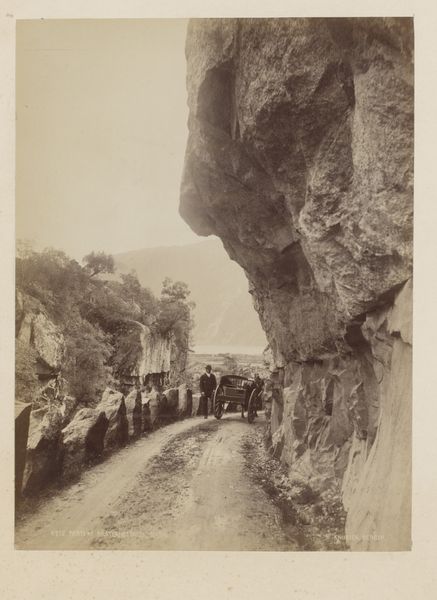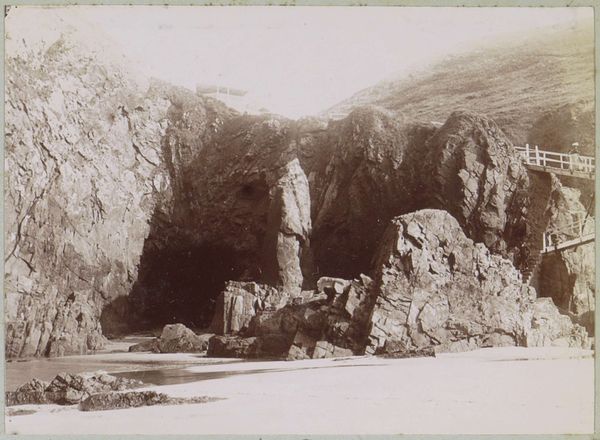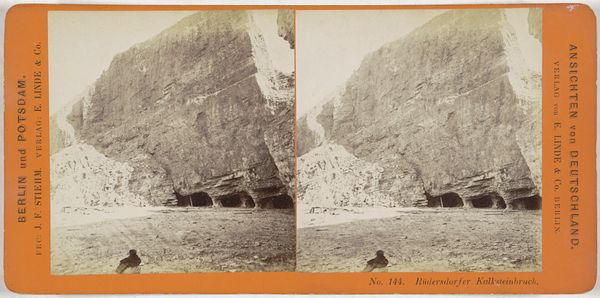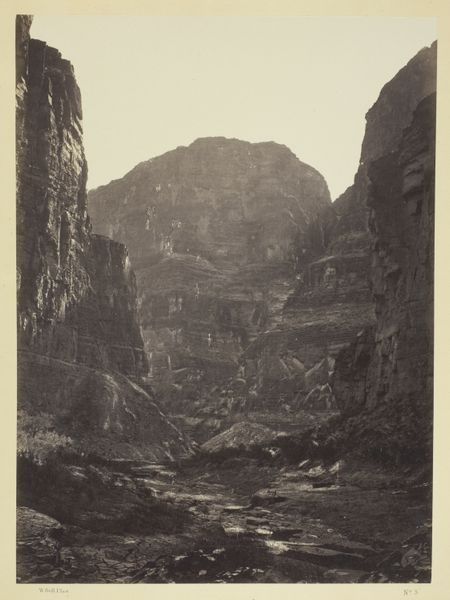
Dimensions: height 136 mm, width 202 mm, height 244 mm, width 318 mm
Copyright: Rijks Museum: Open Domain
Editor: This photogram, "Fingal's Cave on Staffa, Scotland," captured sometime between 1851 and 1880 by James Valentine, is striking. The almost architectural basalt columns create a sense of awe. What historical narratives are at play here? Curator: It's essential to understand how photography, especially landscape photography, emerged during a period of intense colonialism and romantic nationalism. Images like these were used to construct and reinforce notions of national identity and to showcase the ‘sublime’ aspects of nature – often conveniently overlooking or erasing the histories and presence of indigenous populations. Editor: So, this isn't just a picture of a cave, but also reflects broader power dynamics? Curator: Precisely. Who had access to creating and disseminating these images? Whose perspectives were valued? This image aestheticizes the natural world, arguably participating in the erasure of marginalized voices and experiences tied to the land. Consider how Romanticism often idealized the ‘untouched’ wilderness. Editor: I see your point. I was initially drawn to the impressive rock formations and now, I am considering the politics of representation embedded within the image. Curator: Think, too, about the intended audience for such a print. How did these images contribute to the construction of a Western gaze, one that positions the viewer as a detached observer, even a conqueror, of the landscape? Does thinking about the piece in terms of romanticism, land and the ‘untouched wilderness’ now change the initial awe it inspired? Editor: Definitely. It’s less about untouched wilderness and more about a carefully constructed narrative designed to appeal to certain audiences and reinforce specific ideologies. I hadn't considered how much power an image could hold beyond its aesthetic value. Curator: Exactly! Questioning the narratives embedded within seemingly innocuous images opens up a vital space for critical engagement with art history and its connections to broader socio-political realities. Editor: Thanks for guiding me toward seeing beyond the surface. Curator: And thank you for your open mind to engaging with the deeper layers within the image.
Comments
No comments
Be the first to comment and join the conversation on the ultimate creative platform.

